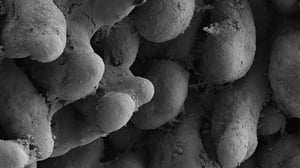Recreate in the lab animal, or even human organs (or parts of them), similar to those present inside the body, to better study diseases and possible treatments, or for the future, revolutionary transplants: it may seem science fiction, also with alarming implications, but it is instead a real and important strand of research. Many groups in the world are working to obtain these organoids (the name they are called technically), which start from stem cells and “produce”, then, biologically active agglomerates, similar to the “real” organ.
So far significant results have been achieved with liver, skin, trachea, cartilage and larynx. Great difficulties have emerged, however, for intestine, because this organ, when developing within the human body, is “pulled” and strained by multiple forces (linked to anatomy), which are so complicated to reproduce, if you want to get an organoid. But a technique developed by the French bioengineers of the INSERM in Nantes and by the researchers at the Cincinnati Children’s Hospital Medical Center (US) seems to have solved, at least partially, the issue. Scholars have inserted a sort of nitinol (a nickel and titanium alloy) approx. one-centimeter-long spring inside mice on which human stem cells had been implanted (to recreate, in fact, a gut organoid).
The spring, compressed inside a gradually melting gelatin capsule, has released a force comparable to the one normally present in the real human intestine. After ten weeks, mice produced approx. 1.2 centimeters long human intestinal organoids, more than twice of those created in mice without springs. But – most important – the organoids obtained with the spring had characteristics much more similar to those of an adult intestine (for example, they showed well-developed intestinal villi).
These intestinal organoids cannot be used for transplants (experiments will have to continue for a long time). However, it is possible – state experts – that cells aggregates produced by animals larger than mice and more similar to humans, such as pigs, could find this application in the future.
The study of French and American researchers was published in the online version of the journalNature Biomedical Engineering, and was also taken up by the journal Science.

